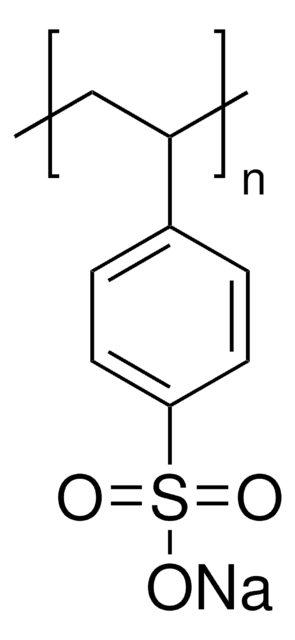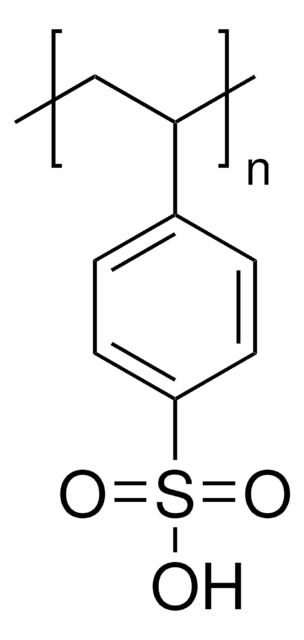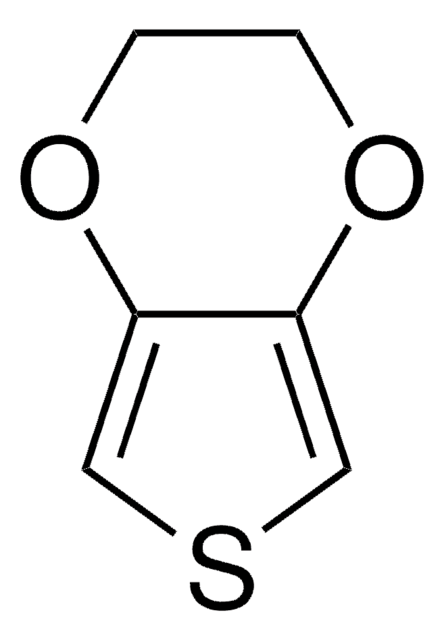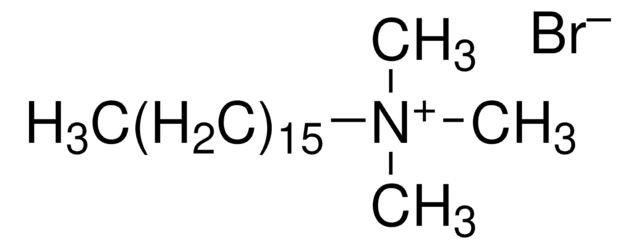435465
Poly(ethylene glycol)-block-poly(propylene glycol)-block-poly(ethylene glycol)
average Mn ~5,800
Synonyme(s) :
Pluronic® P-123, PEG-PPG-PEG
About This Item
Produits recommandés
Densité de vapeur
>1 (vs air)
Niveau de qualité
Pression de vapeur
<0.3 mmHg ( 20 °C)
Forme
solid
Ratio alimentaire
20:70:20 (EO:PO:EO)
Poids mol.
average Mn ~5,800
Composition
PEG, 30 wt. %
Indice de réfraction
n20/D 1.465
Tension de surface
34 dyn/cm, 25 °C, 0.1 wt. % in H2O
Viscosité
350 cP(60 °C, Brookfield)(lit.)
Température de transition
Tm (DSC) 39 °C (at peak)
cloud point 90 °C (1 wt. % aqueous solution)
Densité
1.018 g/mL at 25 °C
HLB
7 - 9
InChI
1S/C3H6O.C2H4O/c1-3-2-4-3;1-2-3-1/h3H,2H2,1H3;1-2H2
Clé InChI
RVGRUAULSDPKGF-UHFFFAOYSA-N
Vous recherchez des produits similaires ? Visite Guide de comparaison des produits
Description générale
Application
Caractéristiques et avantages
Forme physique
Informations légales
Code de la classe de stockage
11 - Combustible Solids
Classe de danger pour l'eau (WGK)
WGK 1
Équipement de protection individuelle
Eyeshields, Gloves, type N95 (US)
Faites votre choix parmi les versions les plus récentes :
Déjà en possession de ce produit ?
Retrouvez la documentation relative aux produits que vous avez récemment achetés dans la Bibliothèque de documents.
Les clients ont également consulté
Articles
Scientists at Sigma-Aldrich® routinely determine number-average molecular weight (Mn) by 1H NMR end-group analysis for polymers having Mn values under 3,000.
Mesoporous materials are formed by a self-assembly process from combined solutions of sol-gel precursors (e.g., metal alkoxides) and structure-directing amphiphiles, usually block-copolymers or surfactants.
In this paper, we discuss recent advances in the preparation of various TiO2 porous structures via hard and soft-templating routes. Specifically, we focus on recent developments in TiO2 mesoporous thin films in a combined sol-gel and evaporation-induced self-assembly (EISA) process.
Notre équipe de scientifiques dispose d'une expérience dans tous les secteurs de la recherche, notamment en sciences de la vie, science des matériaux, synthèse chimique, chromatographie, analyse et dans de nombreux autres domaines..
Contacter notre Service technique








